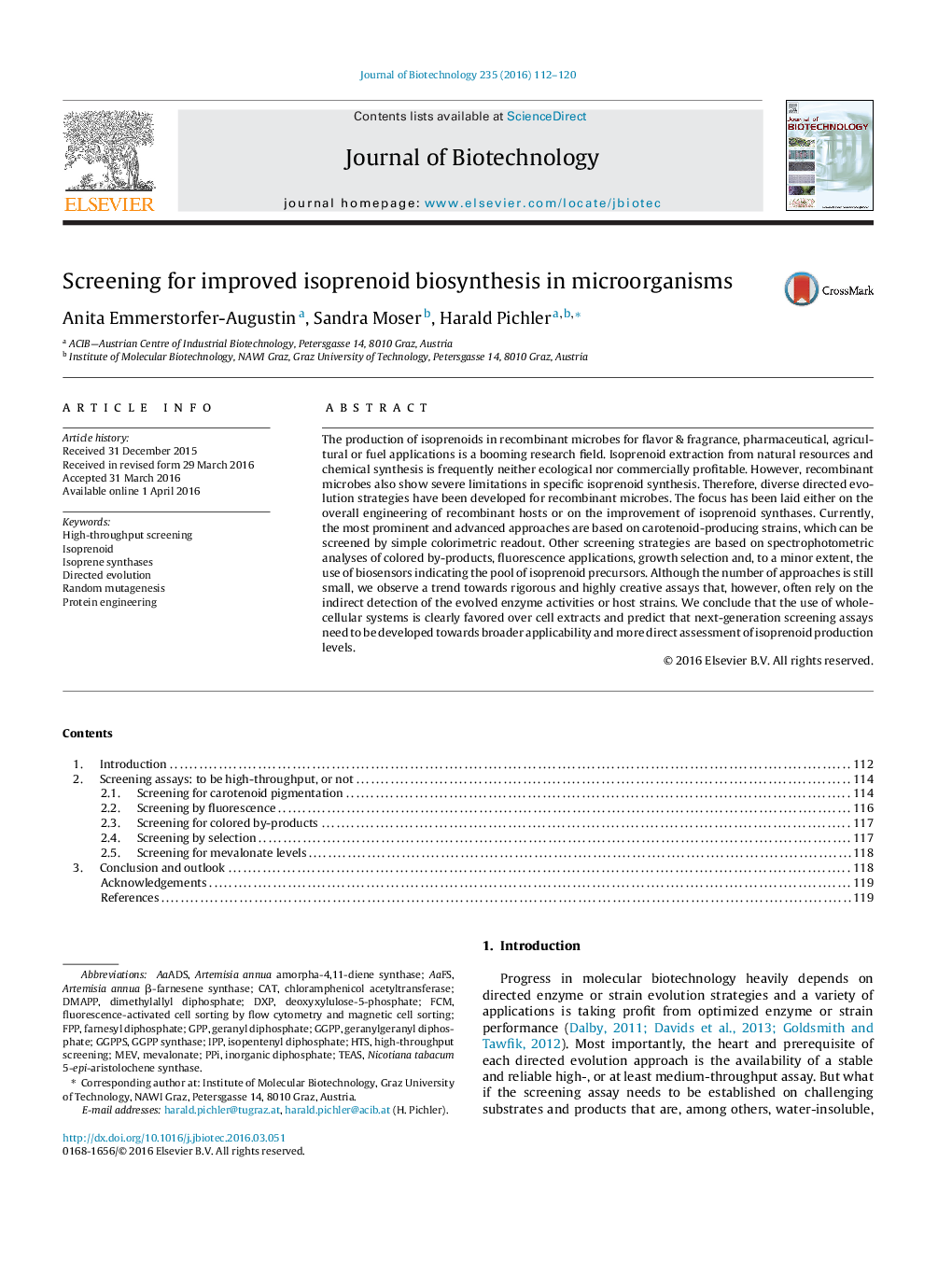| کد مقاله | کد نشریه | سال انتشار | مقاله انگلیسی | نسخه تمام متن |
|---|---|---|---|---|
| 6452323 | 1417010 | 2016 | 9 صفحه PDF | دانلود رایگان |
- Comprehensive review on screening techniques for enhanced isoprenoid production in microbes.
- Use of whole-cellular systems is clearly favored over cell extracts in isoprenoid screening.
- More direct assessment of isoprenoid production desired in next generation assays.
The production of isoprenoids in recombinant microbes for flavor & fragrance, pharmaceutical, agricultural or fuel applications is a booming research field. Isoprenoid extraction from natural resources and chemical synthesis is frequently neither ecological nor commercially profitable. However, recombinant microbes also show severe limitations in specific isoprenoid synthesis. Therefore, diverse directed evolution strategies have been developed for recombinant microbes. The focus has been laid either on the overall engineering of recombinant hosts or on the improvement of isoprenoid synthases. Currently, the most prominent and advanced approaches are based on carotenoid-producing strains, which can be screened by simple colorimetric readout. Other screening strategies are based on spectrophotometric analyses of colored by-products, fluorescence applications, growth selection and, to a minor extent, the use of biosensors indicating the pool of isoprenoid precursors. Although the number of approaches is still small, we observe a trend towards rigorous and highly creative assays that, however, often rely on the indirect detection of the evolved enzyme activities or host strains. We conclude that the use of whole-cellular systems is clearly favored over cell extracts and predict that next-generation screening assays need to be developed towards broader applicability and more direct assessment of isoprenoid production levels.
Journal: Journal of Biotechnology - Volume 235, 10 October 2016, Pages 112-120
